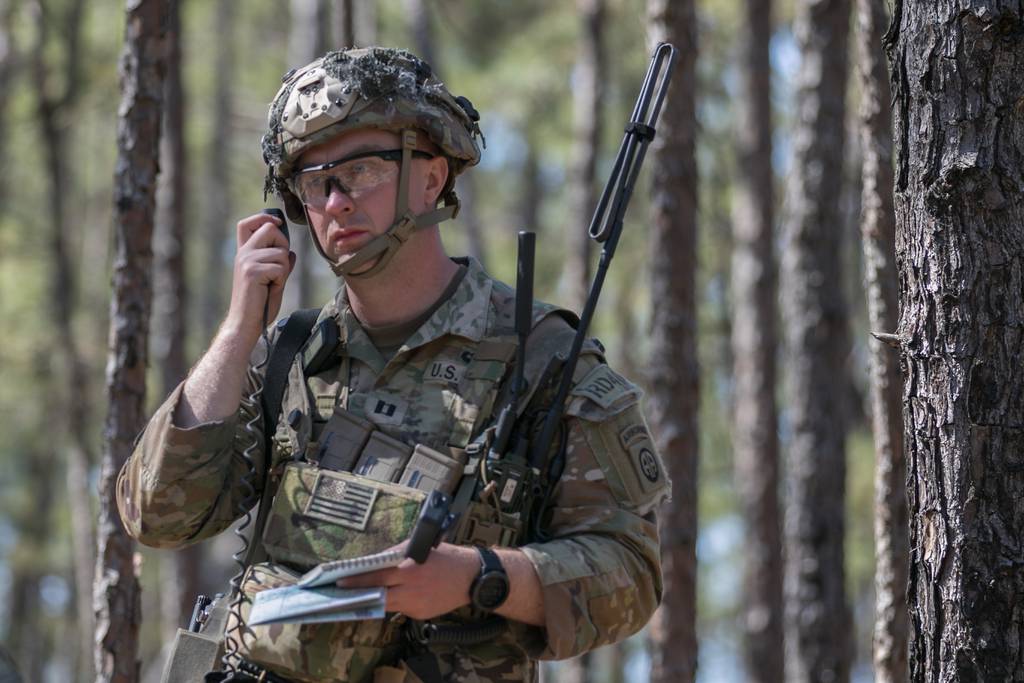ABERDEEN PROVING GROUND, Md. — A year-old lab is cutting down the time it takes to perform risk-reducing tests on technologies headed to major military exercises.
The U.S. Army’s Joint Systems Integration Laboratory, created in October 2020, is the next iteration of the Command, Control, Communications, Computers, Cyber, Intelligence, Surveillance and Reconnaissance Center’s efforts to perform lab-based risk reduction on communications and technical gear before it goes out to the field for training. Typically, the Army wants to ensure such systems work from a technical perspective before soldiers use them.
The communications exercise risk-reduction leading up to a major Army exercise last year, Project Convergence 20, took six weeks. Now the lab is able to fulfil that same need for this year’s Project Convergence in 10 days.
“We were able to cut back on a heck of a lot of time, travel and work that went on out in the dirt down there,” Kimberly Moeltner, JSIL lead, told C4SIRNET in a Nov. 2 interview. “That’s where you see the bang for the buck.”
The 20,000-square-foot facility is able to trim the timeline because it can replicate operational environments. For example, officials said, if a radio needs to be tweaked, someone needs to physically drive onto the range, which is both time-consuming and difficult because of ongoing live-fire exercises. Instead, the lab can replicate distances and, to some degree, threats to provide a baseline prior to fielding tech. That helps the service understand how systems of systems integrate with each other over various networks — a complex task.
The systems won’t always work in the field exactly as they did in the lab, but the JSIL’s modeling and simulation cuts down on tweaks needed during an exercise.
“If we can do it here, it doesn’t mean it will work right off the bat out in a real operational scenario, but it does mean that we know in the controlled environment these are the pieces that did work, and so it’s got to be something else that lets us target where those challenges may be,” said Joseph Welch, director of the C5ISR Center. “It’s a very larger area, and there’s a lot of potential for things to go wrong [while] understanding what your baseline looks like. The JSIL is able to do all of that so that we know when these systems start performing out there, if they’ve got issues or challenges, we know what the baseline looks like and we also have this capability that’s back here that’s able to troubleshoot in parallel to make [Project Convergence] as successful as we can.”
Moreover, experts can remotely participate with the lab, which widens the pool of those able to contribute to JSIL’s efforts.
Another difference between previous risk-reduction efforts and JSIL’s current approach is the inclusion of joint partners. As the Defense Department charts toward its new operating concept — Joint All-Domain Command and Control — the armed services will need to coordinate more on systems. Ahead of this year’s Project Convergence, there were 13 external organizations, including joint partners, that joined the lab’s efforts. That complemented the actual exercise, which saw a significant increase in joint participation.
Welch said there were representatives from all the services at the communications exercises ahead of Project Convergence, and he found it interesting to see how all the systems behaved in real life.
Next year, officials hope to bring in coalition partners.
Looking at the smaller picture
Officials also said JSIL can help smaller and informal communications exercises more frequently to improve the fidelity of systems.
It could also be leveraged by joint partners in conjunction with their labs or by companies to improve systems and help transition programs from the research and development community.
Additionally, given all the data the facility provides, officials said they are working with the Army’s testing community to reuse some of that data to feed into developmental tests for programs.
“You want to learn as much as you can before you have to get out in the operational environment where it’s costly and it can be very complex to understand the variables because the dynamics of that environment, understand as much as you can in the lab,” Welch said. “I would foresee the JSIL being utilized potentially reaching developmental test objectives.”
Combined with the C5ISR Center’s DevSecOps effort, dubbed Orion Forge, the lab could also support operations rather than just operational exercises.
“You could envision where we’ve got a product that’s deployed, it’s been fielded, it’s managed by a [project or program manager] and there’s some real-time feedback because of a situation that wasn’t anticipated where we need to bring this in or we need to make this change to the software,” Welch said. “The Orion Forge implementation — it provides the environment for that to be received, built and then redeployed very rapidly to be able to adjust those needs quickly.”
Mark Pomerleau is a reporter for C4ISRNET, covering information warfare and cyberspace.








